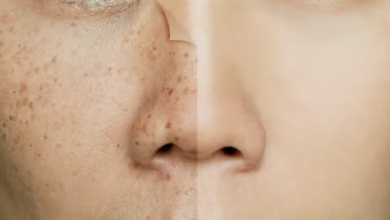What is Lung Infection and How Does It Affect Your Health?

A lung infection occurs when harmful microorganisms like bacteria, viruses, or fungi enter your lungs, causing inflammation and difficulty in breathing. This condition can affect anyone, but it’s more common in people with weakened immune systems, such as the elderly or those with pre-existing respiratory conditions. Understanding the causes, symptoms, and treatments of lung infections is important to protect your lung health and prevent serious complications.
In this article, we’ll explore what a lung infection is, what causes it, how it affects your body, and how you can recognize the symptoms early for timely treatment.
What is a Lung Infection?

A lung infection happens when harmful organisms like bacteria, viruses, or fungi invade your lungs, leading to inflammation and problems with your respiratory system. These infections can range from mild to severe and can affect how well your lungs function, making it difficult to breathe and get enough oxygen into your bloodstream. Common types of lung infections include pneumonia, bronchitis, and tuberculosis.
Causes of Lung Infection
1. Viral Infections

Viruses such as influenza (flu), COVID-19, and RSV (Respiratory Syncytial Virus) are known to cause lung infections. These viruses attack the lungs and lead to inflammation and breathing difficulties. They are highly contagious, especially in crowded places or during colder months.
2. Bacterial Infections
Bacteria like Streptococcus pneumoniae and Haemophilus influenzae are responsible for infections such as pneumonia. These infections often occur when bacteria enter the lungs through the nose or mouth and cause severe inflammation.
3. Fungal Infections
In some cases, fungi such as Aspergillus and Histoplasma can cause lung infections, particularly in people with weakened immune systems. Fungal infections can be more difficult to treat and often require prolonged medication.
4. Underlying Health Conditions
Conditions like diabetes, heart disease, and chronic respiratory disorders can make the lungs more susceptible to infections. Weakened immune systems due to age, medications, or other health conditions also increase the risk.
Symptoms of Lung Infection
-
Coughing
-
Shortness of Breath
-
Fever and Chills
-
Fatigue and Weakness
-
Wheezing or Hoarseness
-
Bluish Tint to Lips or Fingernail
Treatment of Lung Infection
1. Antibiotics for Bacterial Infections
If the infection is caused by bacteria, antibiotics will be prescribed to kill the bacteria and reduce inflammation in the lungs. It’s essential to complete the full course of antibiotics, even if you start feeling better.
2. Antiviral Medications for Viral Infections
For viral infections, antiviral medications may be used to reduce the severity of symptoms and prevent complications. Rest and hydration are also important for recovery.
3. Antifungal Treatments for Fungal Infections
Fungal infections are treated with specific antifungal medications. These medications need to be taken for a longer period to completely eliminate the infection.
4. Supportive Care
In severe cases, oxygen therapy or breathing treatments may be required to support breathing and improve oxygen levels in the body. In some cases, hospitalization may be necessary, especially for elderly or high-risk patients.
Conclusion
Lung infections can be serious, but with proper care, they are treatable. If you experience symptoms like a persistent cough, shortness of breath, or chest pain, seek medical attention right away.
Taking preventive measures like vaccination, quitting smoking, and maintaining a healthy lifestyle can also help reduce the risk of lung infections in the future.
If you have any queries related to medical health, consult Subhash Goyal or his team members on this given no +91 99150 72372, +91 99150 99575, +918283060000



